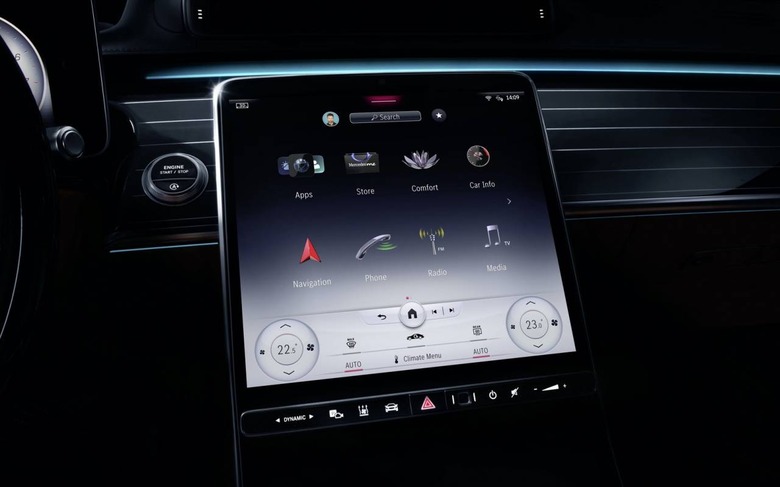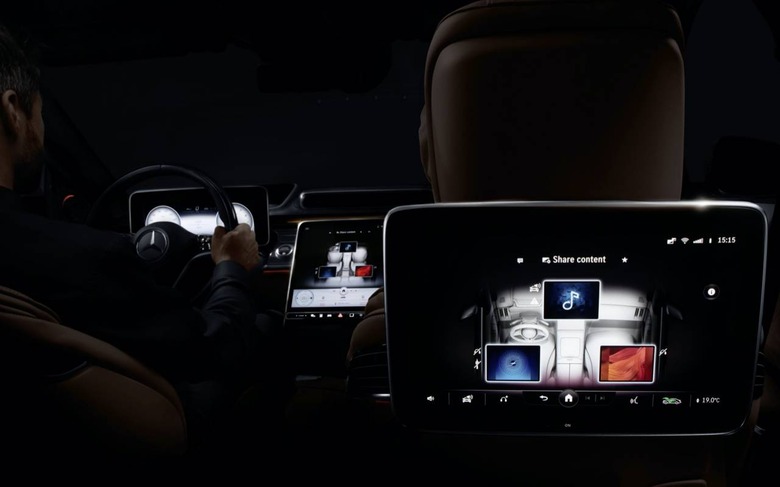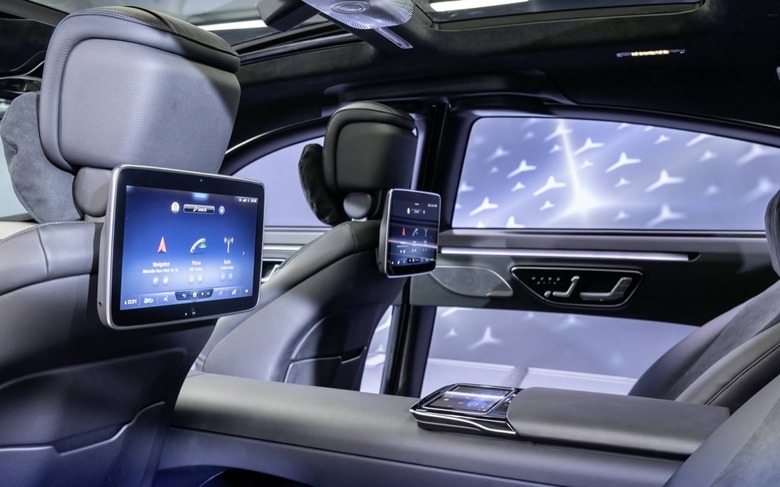Mercedes Looks To New Sensors So Lavish S-Class Is More User-Friendly
Mercedes will use cabin cameras to figure out not only who's inside the car but where they're sitting, and what they're looking at, with the upcoming 2021 S-Class promising new levels of tracking – and convenience – for its high-tech interior. Expected to make its official debut later in 2020, the new S-Class will be Mercedes-Benz's most lavish and technically-complex vehicle so far, though you won't need to read the user guide to figure it out.
In fact, the automaker promises, part of what will make the new S-Class special is just how intuitive it is to use. Once upon a time that meant a dedicated, labeled button for every feature, but as modern vehicles have become more complex that's no longer possible.
Instead the 2021 S-Class will feature Mercedes' newest My MBUX infotainment system on a sizable central touchscreen. That'll be one way to interact with the car's systems – whether that's adjust the drivetrain settings, cabin comfort, or multimedia – but it won't be the only one. As many as five displays can be included, three of which feature in the rear. Voice-activated assistance, using the "Hey Mercedes" wake-phrase, will be supported too, but the luxe sedan will even know where you're looking.

Face and eye-tracking cameras built into the dashboard will be able to figure out where the driver is staring. That way, My MBUX will be able to intuit what you might want to do: rather than having to select which side-mirror to adjust before you change the angle, for example, you could merely look at the mirror and twiddle the directional pad. The S-Class itself will understand your intention, and set the correct mirror accordingly. Turn to look back over your shoulder, and the car will automatically open the rear blind for maximum visibility.
It's part of a greater focus on usability that, Mercedes execs say, existing S-Class owners have been asking for. Part of the automaker's response to that is making the multiple systems in the car work more cohesively. That same tracking camera could also be used for driver monitoring, for instance, for assisted driving systems, as well as for facial recognition.

When someone gets into the car, the S-Class will recognize them, either from their face, their voice, or their fingerprint. Biometric data will be saved locally, only stored in the vehicle itself, but each user will have a profile that's saved in Mercedes' cloud. That will have everything from seat position preferences to favorite destinations and more, and can be instantly loaded into any compatible vehicle.
If you switch between Mercedes', for instance, your MBUX profile will bring your infotainment and comfort settings with you. Even if you switch seats in the car – moving from the driver's seat, perhaps, to the rear – that profile will be able to establish all your favored settings automatically.

Eventually, Mercedes promises, the S-Class will be able to predict what you might do – and step in if that presents a potential danger. Using the cameras, the car will be able to detect intention: if you're shifting as through you're about to reach for the door handle, and there's a vehicle coming up behind you that could cause a collision, the S-Class will be able to flash its door lighting to warn you to wait.
Even the new head-up display, which will support augmented reality graphics that can shift their virtual depth in the driver's field of view, will rely on the cameras. That way, there'll be no configuration of the 3D feature, and it'll be able to adjust itself to whoever is at the wheel.
